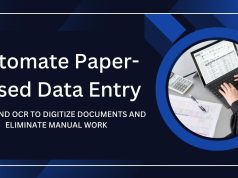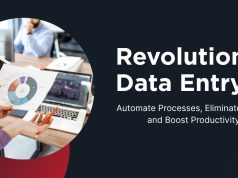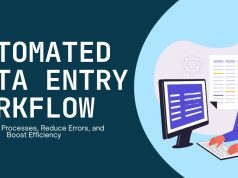Manual data entry is one of the biggest productivity killers for sales and marketing teams. Spending hours copying information between systems, updating contact records, and maintaining clean databases takes valuable time away from revenue-generating activities.
HubSpot users face this challenge daily—juggling data from multiple sources while trying to keep their CRM accurate and up-to-date. The good news? You can automate HubSpot data entry using built-in tools, third-party integrations, and smart workflows that eliminate repetitive tasks.
This comprehensive guide will show you exactly how to automate HubSpot data entry, from simple workflow automations to advanced integration strategies. You’ll learn practical techniques to streamline your data management processes, reduce human error, and free up your team to focus on high-value activities.
Understanding HubSpot’s Data Entry Pain Points
Before diving into automation solutions, it’s important to identify where manual data entry creates the biggest bottlenecks in your HubSpot system.
Common Manual Data Entry Tasks
Sales and marketing teams typically spend significant time on these repetitive activities:

Contact Management: Creating new contact records, updating existing information, and enriching profiles with additional details like job titles, company size, or industry data.
Deal Updates: Moving deals through pipeline stages, updating deal amounts, adding notes from sales calls, and tracking key dates.
Activity Logging: Recording emails, phone calls, meetings, and other touchpoints that happen outside of HubSpot’s native tools.
Lead Scoring: Manually adjusting lead scores based on behavioral data or qualification criteria that aren’t captured automatically.
Data Enrichment: Adding missing information to incomplete records by researching prospects on LinkedIn, company websites, or other data sources.
The Cost of Manual Processes
Research shows that sales representatives spend only about 35% of their time actually selling. The remainder gets consumed by administrative tasks, with data entry representing a significant portion of that non-selling time. For marketing teams, manual data management can delay campaign launches and impact lead nurturing effectiveness.
HubSpot’s Native Automation Tools
HubSpot provides several built-in features that can automate data entry tasks without requiring third-party integrations.
Workflows: The Foundation of HubSpot Automation
Workflows serve as HubSpot’s primary automation engine, allowing you to trigger actions based on specific criteria or events.
Property Updates: Set up workflows to automatically update contact or company properties when certain conditions are met. For example, you can automatically change a lead’s lifecycle stage from “Subscriber” to “Lead” when they download a specific piece of content.
Deal Management: Create workflows that automatically move deals between pipeline stages based on specific actions, such as when a proposal is sent or a contract is signed.
Data Standardization: Use workflows to clean and standardize data as it enters your system. This might include formatting phone numbers consistently or standardizing company names.
Forms and Lead Capture Automation
HubSpot forms can do more than just collect basic contact information. Strategic form setup can significantly reduce manual data entry requirements.
Progressive Profiling: Configure forms to ask for different information based on what you already know about a contact, gradually building complete profiles without overwhelming prospects.
Smart Fields: Use conditional form fields that appear or disappear based on previous answers, ensuring you collect relevant information while keeping forms concise.
Hidden Fields: Automatically capture UTM parameters, page views, referral sources, and other behavioral data without requiring manual input.
Email and Communication Automation
HubSpot’s email tools include several features that can automate data entry related to communication tracking.
Email Integration: When you connect your email account to HubSpot, conversations get automatically logged and associated with the appropriate contact records.
Meeting Scheduling: The meetings tool automatically creates activities in contact timelines when prospects book appointments, eliminating the need to manually log these interactions.
Sequences: Automated email sequences can trigger property updates or workflow actions based on prospect engagement, reducing the need for manual follow-up tracking.

Advanced Automation Strategies
Beyond basic workflows, several advanced techniques can further reduce manual data entry requirements.

Custom Property Automation
Create calculated properties that automatically compute values based on other data points in your system.
Revenue Calculations: Set up properties that automatically calculate monthly recurring revenue, deal velocity, or customer lifetime value based on existing deal and subscription data.
Engagement Scoring: Build composite scores that combine multiple engagement metrics like email opens, website visits, and content downloads into a single, automatically updated score.
Time-Based Calculations: Create properties that automatically calculate days since last contact, time in current lifecycle stage, or other time-sensitive metrics.
Behavioral Trigger Automation
Use HubSpot’s tracking capabilities to trigger data updates based on prospect and customer behavior.
Website Activity: Set up workflows that update lead scores or contact properties based on specific page visits, time spent on site, or number of sessions.
Content Engagement: Automatically tag contacts based on the types of content they consume, helping segment audiences without manual categorization.
Product Usage: For SaaS companies, integrate product usage data to automatically update customer health scores or trigger expansion conversations.
Third-Party Integration Solutions
While HubSpot’s native tools are powerful, third-party integrations can automate data entry from external sources and systems.
Zapier and Integration Platforms
Zapier connects HubSpot to thousands of other applications, enabling automated data flow between systems.
Social Media Integration: Automatically create contacts from new LinkedIn connections or update records with social media engagement data.
E-commerce Automation: Sync purchase data from Shopify, WooCommerce, or other platforms to automatically update customer records and trigger post-purchase workflows.
Survey and Feedback Integration: Connect tools like Typeform or SurveyMonkey to automatically update contact properties based on survey responses.
Data Enrichment Services
Third-party data providers can automatically enhance your HubSpot records with additional information.
Company Data: Services like Clearbit or ZoomInfo can automatically populate company records with firmographic data like industry, employee count, and revenue.
Contact Enrichment: Automatically add job titles, social media profiles, and other professional information to contact records.
Intent Data: Integrate intent data providers to automatically update lead scores based on research activity and buying signals.
CRM Integration
If your organization uses multiple systems, automated data synchronization can eliminate duplicate entry across platforms.
Salesforce Integration: Keep contact and deal information synchronized between HubSpot and Salesforce automatically.
ERP Integration: Connect accounting or ERP systems to automatically update customer information and deal values.
Support Tool Integration: Sync customer service interactions from tools like Zendesk or Freshdesk to maintain complete customer histories.
Implementation Best Practices
Successfully automating HubSpot data entry requires careful planning and execution.
Start with Data Audit
Before implementing automation, conduct a thorough audit of your existing data and processes.
Data Quality Assessment: Identify duplicate records, incomplete profiles, and inconsistent formatting that need to be addressed.
Process Mapping: Document current manual processes to understand which tasks consume the most time and offer the greatest automation potential.
Integration Inventory: Catalog all the systems and tools your team uses to identify integration opportunities.
Gradual Implementation Approach
Rather than attempting to automate everything at once, implement changes gradually to ensure each automation works correctly before adding complexity.
Pilot Programs: Start with small-scale automations for specific processes or team segments.
Testing Procedures: Establish protocols for testing new workflows and integrations before rolling them out organization-wide.
Rollback Plans: Maintain the ability to quickly disable or modify automations if unexpected issues arise.
Training and Change Management
Automation success depends on user adoption and proper change management.
Team Training: Ensure all team members understand how new automations work and how to interact with automated processes.
Documentation: Create clear documentation for all automated workflows and integrations.
Feedback Loops: Establish regular check-ins to gather feedback on automation effectiveness and identify areas for improvement.
Measuring Automation Success
Track key metrics to evaluate the impact of your data entry automation efforts.
Time Savings Metrics
Hours Saved: Calculate the time previously spent on manual tasks that are now automated.
Process Efficiency: Measure how automation affects overall process completion times.
Resource Reallocation: Track how team members redirect their time toward higher-value activities.
Data Quality Improvements
Accuracy Rates: Compare error rates before and after implementing automation.
Completeness Scores: Measure improvements in profile completeness and data richness.
Consistency Metrics: Track standardization improvements across your database.
Business Impact Measures
Lead Response Time: Measure how automation affects speed of lead follow-up and qualification.
Conversion Rates: Track whether improved data quality and faster processes impact conversion rates.
Revenue Attribution: Assess how better data enables more accurate revenue attribution and reporting.
Troubleshooting Common Automation Issues
Even well-planned automation can encounter problems. Understanding common issues helps you address them quickly.
Data Sync Problems
Duplicate Creation: Implement deduplication rules to prevent automation from creating duplicate records.
Field Mapping Errors: Regularly audit integration field mappings to ensure data flows to the correct properties.
Sync Delays: Account for potential delays in data synchronization when designing dependent workflows.
Workflow Logic Issues
Infinite Loops: Careful workflow design prevents situations where automations trigger each other indefinitely.
Unexpected Triggers: Regular testing helps identify scenarios where workflows trigger under unintended circumstances.
Performance Impact: Monitor workflow performance to ensure automations don’t slow down system responsiveness.
Transform Your HubSpot Data Management
Automating HubSpot data entry transforms how your sales and marketing teams operate. By implementing the strategies outlined in this guide, you can eliminate time-consuming manual tasks, improve data accuracy, and enable your team to focus on revenue-generating activities.
Start with HubSpot’s native automation tools like workflows and smart forms, then gradually add third-party integrations and advanced techniques as your needs evolve. Remember that successful automation requires ongoing maintenance and optimization—regularly review your automated processes to ensure they continue meeting your team’s needs.
The investment in data entry automation pays dividends through improved team productivity, better data quality, and more effective sales and marketing processes. Begin implementing these techniques and watch as your team becomes more efficient and your HubSpot system becomes a more powerful driver of business growth.










